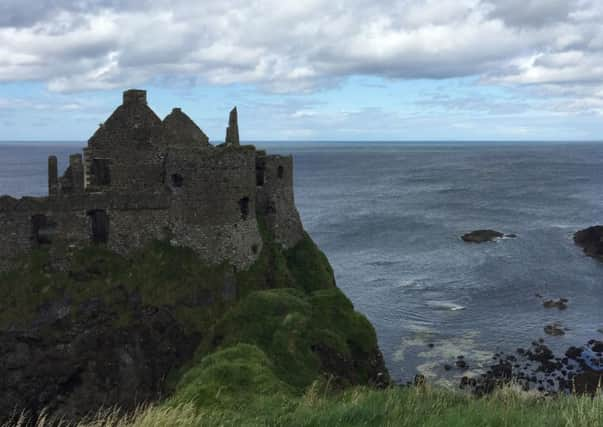Bid to unearth Dunluce burial ground of Spanish Armada sailors


According to local legend an ancient graveyard near Dunluce Castle was used to give a Christian burial to more than 200 sailors whose bodies washed up on the coast when the La Girona warship sank in 1588.
Around 24 of the huge fleet Spanish king Philip II sent to invade England were wrecked in violent storms off the coast of Ireland. The greatest loss of life came with the sinking of the La Girona. Of the 1,300 on board, only nine survived.
Advertisement
Hide AdAdvertisement
Hide AdThe 50-gun galley was smashed on rocks off Lacada Point near the landmark Giant’s Causeway and bodies of many of the drowned sailors washed ashore along the coastline.
Archaeologists from Stormont’s Department of the Environment (DoE) are now planning to conduct a geophysical survey of a large unmarked plot in an old graveyard at nearby Dunluce in a bid to establish if it was used as a mass burial site for the Armada victims.
The graveyard surrounds the ruins of St Cuthbert’s – a church dating back to the 13th century.
Andrew Gault is one of the DoE archaeologists working on the project.
Advertisement
Hide AdAdvertisement
Hide Ad“There would have been hundreds of bodies washed up along this coastline and the local tradition is a lot of them were buried in St Cuthbert’s graveyard and there’s a specific area of the graveyard where local tradition would say that took place,” he said.
“We can see there’s a very conspicuous area within the graveyard where there weren’t any headstones erected and it’s fairly regular and rectangular in shape and it’s quite sunken and hollow. So that’s a bit of smoking gun as to where you would expect if there was a mass grave to be it would be in that type of location.
“So we are hoping to do some further investigation in the future using geophysical survey, which is a non-destructive non-intrusive technique, to see whether there is evidence of actually a big burial cut, a big grave cut in that area. That will help to firm up exactly whether there is a Spanish Armada era grave in that location – so that’s a really interesting part of the site’s story.”
The grave examination is part of a wider DoE project to unearth the lost history of Dunluce.
Advertisement
Hide AdAdvertisement
Hide AdThe once thriving merchant town, sitting in the shadow of the imposing medieval Dunluce Castle, was destroyed by fire in the mid-1640s and lay buried in the earth for more than four centuries before archaeologists began uncovering its secrets.
Some of the streets and homes of Dunluce have already been rediscovered and focus has now shifted to the remnants of St Cuthbert’s parish church.
Ahead of the survey of the suspected Armada grave, archaeologists have been trying to find out who else lies buried in the church grounds.
They have been using laser scanners and GPS technology to map all the plots and specialist photographic techniques to decipher headstone inscriptions that are no longer visible to the naked eye.
Advertisement
Hide AdAdvertisement
Hide AdAs part of an outreach initiative, local history groups have been invited along to help in this work.
On the most recent day on site, more than 20 enthusiasts joined the archaeological endeavour.
Jean Clayton, from the Portrush Heritage Group, discovered that two of her ancestors are buried in the graveyard.
“There’s tremendous local interest in this site,” she said.
“We are inundated by those wanting to come on these days.
“They are very informative – it really allows you into the world of being an archaeologist.”